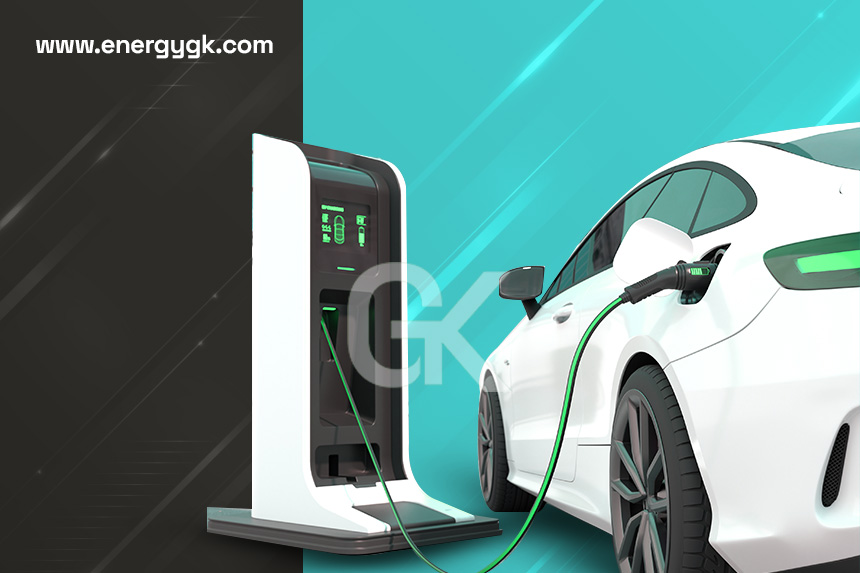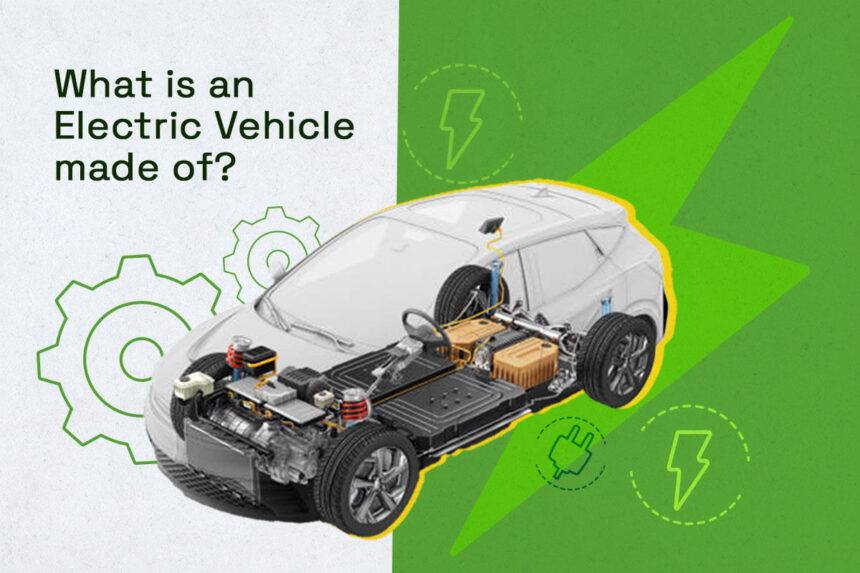Electric vehicles (EVs) have gained significant popularity in recent years due to their environmental benefits and improved technology. As more people embrace EVs, the need for a reliable and efficient charging infrastructure becomes crucial. In this article, we will explore the latest advancements in fast EV charging infrastructure, highlighting the technologies and initiatives that are propelling the EV revolution.
Introduction
The transition to electric mobility is accelerating, and fast EV charging infrastructure plays a pivotal role in supporting this shift. Fast charging refers to the ability to recharge an EV quickly, significantly reducing charging times compared to traditional charging methods. As technology continues to advance, new solutions are emerging to address the challenges and limitations of the existing charging infrastructure.
Understanding Fast EV Charging Infrastructure
Fast EV charging infrastructure refers to a network of charging stations capable of delivering high-power charging to EVs. These charging stations are strategically placed along major highways, urban centers, and other high-traffic areas. They provide EV owners with convenient access to charging, enabling long-distance travel and reducing range anxiety.
The Importance of Fast EV Charging
Fast EV charging is crucial for widespread EV adoption. It offers several advantages, including reducing charging times from hours to minutes, making EVs more practical for daily use and long-distance travel. Fast charging also enhances the convenience factor, allowing drivers to charge their vehicles while taking a short break, similar to refueling at a gas station. This accessibility and convenience play a significant role in eliminating barriers to EV ownership.
Current Challenges in EV Charging Infrastructure
Despite the growing popularity of EVs, the current charging infrastructure faces several challenges. Insufficient charging stations, long waiting times during peak hours, and inconsistencies in charging standards are some of the key obstacles. Additionally, the limited range of EVs and the fear of running out of charge, known as range anxiety, hinder widespread adoption.
Advancements in Fast EV Charging Technology
To address the challenges mentioned above, various advancements in fast EV charging technology are revolutionizing the industry.
High-Power Charging Stations
High-power charging stations, also known as ultra-rapid charging stations, are capable of delivering a substantial amount of power to charge an EV quickly. These stations utilize high-voltage power grids and advanced power electronics to provide charging speeds of up to several hundred kilowatts. As a result, EV owners can add significant range to their vehicles in a matter of minutes.
Ultra-Fast Charging Technologies
In addition to high-power charging stations, ultra-fast charging technologies are being developed to further reduce charging times. Technologies like ultra-fast chargers and flash charging aim to recharge EVs in mere seconds. While these technologies are still in the experimental phase, they hold immense promise for the future of EV charging. By utilizing advanced energy transfer mechanisms and innovative battery technologies, these ultra-fast charging solutions aim to make EV charging as quick and convenient as refueling a traditional vehicle.
Battery Advancements for Faster Charging
Another critical aspect of fast EV charging infrastructure lies in the advancements made in battery technology. Researchers and manufacturers are continuously working on improving the energy storage capabilities of EV batteries. By enhancing battery chemistry, increasing energy density, and optimizing charging algorithms, they are making significant strides in reducing charging times. These advancements enable EVs to accept higher charging rates without compromising battery longevity, ensuring a seamless and efficient charging experience.
Overcoming Range Anxiety with Fast Charging
Range anxiety, the fear of running out of charge while driving, has been a significant concern for potential EV owners. Fast EV charging infrastructure plays a vital role in alleviating this anxiety by offering accessible and reliable charging options. When EV drivers have confidence in the availability of fast charging stations along their routes, they are more likely to embrace electric mobility without worrying about range limitations. The expansion of fast charging networks helps build trust and eliminates one of the main barriers to EV adoption.
Expanding Fast Charging Networks
To realize the full potential of fast EV charging infrastructure, the expansion of charging networks is essential. This expansion involves establishing a comprehensive network of fast charging stations that cover major highways, urban areas, and residential communities. Collaboration and standardization among various stakeholders, including automakers, charging infrastructure providers, and governments, are crucial for the seamless integration and interoperability of charging networks. By working together, these entities can ensure a consistent and reliable charging experience for EV owners, regardless of their location or the EV model they drive.
Collaboration and Standardization
Collaboration and standardization efforts are key to the success of fast EV charging infrastructure. Industry players are actively working together to establish common charging standards, such as Combined Charging System (CCS) and CHAdeMO, to ensure compatibility across different EV models and charging equipment. By adopting unified standards, EV owners can confidently access any charging station within the network, eliminating the need for multiple charging adapters and simplifying the charging process.
Government Initiatives and Support
Governments worldwide are recognizing the importance of fast EV charging infrastructure and are implementing initiatives to support its development. They offer incentives and grants to encourage the installation of charging stations, promote research and development in EV technology, and incentivize consumers to switch to electric vehicles. Additionally, governments are investing in renewable energy sources to power charging stations, further promoting sustainability and reducing reliance on fossil fuels.
Public and Private Partnerships
Public and private partnerships play a crucial role in accelerating the expansion of fast EV charging infrastructure. Collaboration between government agencies, charging infrastructure providers, utilities, and businesses allows for efficient deployment of charging stations and the integration of EV charging with existing infrastructure. Public-private partnerships ensure the availability of charging stations in public spaces, commercial areas, and private properties, making charging accessible to a broader range of users.
The Future of Fast EV Charging Infrastructure
The future of fast EV charging infrastructure is promising. As technology continues to advance, charging speeds will improve, reducing charging times even further. The integration of smart grid technologies will enable better management of energy distribution, ensuring efficient utilization of available resources. Wireless charging systems will become more prevalent, offering convenience and ease of use. Moreover, the widespread adoption of renewable energy sources will enhance the sustainability of EV charging infrastructure, minimizing environmental impact.
Conclusion
Fast EV charging infrastructure is revolutionizing the electric mobility landscape. With advancements in technology, collaboration among stakeholders, and government support, the barriers to widespread EV adoption are gradually diminishing. Fast charging provides a practical solution for range anxiety, making electric vehicles a viable option for both daily commuting and long-distance travel. The future holds tremendous potential for fast EV charging infrastructure. As the demand for electric vehicles grows, the industry will continue to innovate and expand the charging network, ensuring convenient and efficient charging options for all EV owners.
FAQs
1. How fast can an EV charge at a high-power charging station? At high-power charging stations, EVs can charge at speeds of several hundred kilowatts, enabling significant range additions in just a few minutes.
2. Are ultra-fast charging technologies commercially available? While ultra-fast charging technologies are still in the experimental phase, they hold promise for the future of EV charging. Commercial availability will depend on further development and standardization.
3. How can fast charging help overcome range anxiety? Fast charging provides EV drivers with accessible and reliable charging options along their routes, eliminating concerns about running out of charge and alleviating range anxiety.
4. Are there international standards for fast EV charging? Yes, industry players have established common charging standards such as CCS and CHAdeMO, ensuring interoperability and compatibility across different EV models and charging equipment.
5. What role do governments play in fast EV charging infrastructure? Governments support the development of fast EV charging infrastructure through incentives, grants, and investments in renewable energy sources. They also promote research and development in EV technology.
Note: The above FAQs are intended to provide general information and may vary based on regional regulations and technological advancements.
In conclusion, the advancements in fast EV charging infrastructure are driving the widespread adoption of electric vehicles. With high-power charging stations, ultra-fast charging technologies, and battery advancements, EV charging times are significantly reduced. Collaborative efforts among stakeholders and government support are essential for expanding charging networks and ensuring seamless charging experiences. The future holds exciting possibilities for fast EV charging, enabling a sustainable and efficient transportation ecosystem.







